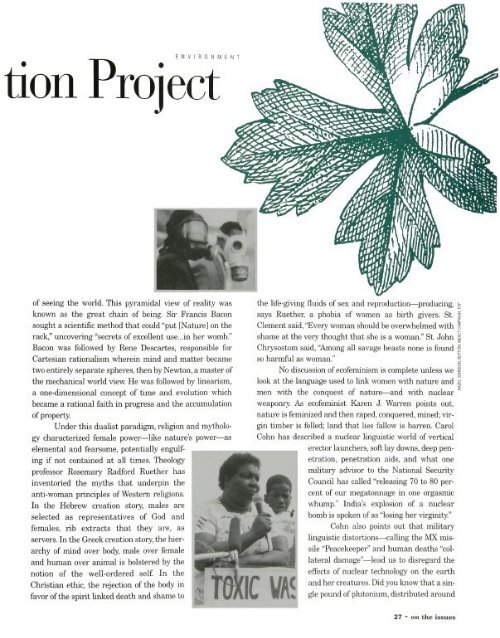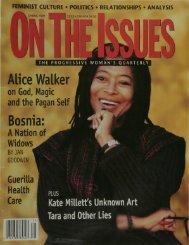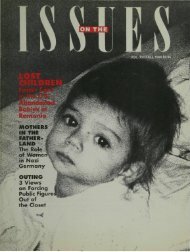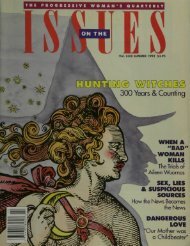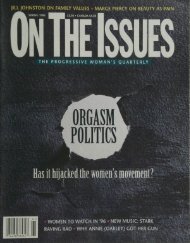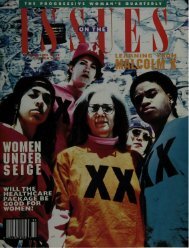women histories, incest sexual abuse. institutionalized. But what if ...
women histories, incest sexual abuse. institutionalized. But what if ...
women histories, incest sexual abuse. institutionalized. But what if ...
You also want an ePaper? Increase the reach of your titles
YUMPU automatically turns print PDFs into web optimized ePapers that Google loves.
ENVIRONMENT<br />
tion rroject<br />
of seeing the world. This pyramidal view of reality was<br />
known as the great chain of being. Sir Francis Bacon<br />
sought a scient<strong>if</strong>ic method that could "put [Nature] on the<br />
rack," uncovering "secrets of excellent use...in her womb."<br />
Bacon was followed by Rene Descartes, responsible for<br />
Cartesian rationalism wherein mind and matter became<br />
two entirely separate spheres, then by Newton, a master of<br />
the mechanical world view. He was followed by linearism,<br />
a one-dimensional concept of time and evolution which<br />
became a rational faith in progress and the accumulation<br />
of property.<br />
Under this dualist paradigm, religion and mythology<br />
characterized female power—like nature's power—as<br />
elemental and fearsome, potentially engulfing<br />
<strong>if</strong> not contained at all times. Theology<br />
professor Rosemary Radford Ruether has<br />
inventoried the myths that underpin the<br />
anti-woman principles of Western religions.<br />
In the Hebrew creation story, males are<br />
selected as representatives of God and<br />
females, rib extracts that they are, as<br />
servers. In the Greek creation story, the hierarchy<br />
of mind over body, male over female<br />
and human over animal is bolstered by the<br />
notion of the well-ordered self. In the<br />
Christian ethic, the rejection of the body in<br />
favor of the spirit linked death and shame to<br />
the l<strong>if</strong>e-giving fluids of sex and reproduction—producing, j<br />
says Ruether, a phobia of <strong>women</strong> as birth givers. St. j<br />
Clement said, "Every woman should be overwhelmed with I<br />
shame at the very thought that she is a woman." St. John ;<br />
Chrysostom said, "Among all savage beasts none is found j<br />
so harmful as woman."<br />
No discussion of ecofeminism is complete unless we !<br />
look at the language used to link <strong>women</strong> with nature and j<br />
men with the conquest of nature—and with nuclear<br />
weaponry. As ecofeminist Karen J. Warren points out,<br />
nature is feminized and then raped, conquered, mined; virgin<br />
timber is felled; land that lies fallow is barren. Carol<br />
Cohn has described a nuclear linguistic world of vertical<br />
erector launchers, soft lay downs, deep penetration,<br />
penetration aids, and <strong>what</strong> one<br />
military advisor to the National Security<br />
Council has called "releasing 70 to 80 percent<br />
of our megatonnage in one orgasmic<br />
whump." India's explosion of a nuclear<br />
bomb is spoken of as "losing her virginity."<br />
Cohn also points out that military<br />
linguistic distortions—calling the MX missile<br />
"Peacekeeper" and human deaths "collateral<br />
damage"—lead us to disregard the<br />
effects of nuclear technology on the earth<br />
and her creatures. Did you know that a single<br />
pound of plutonium, distributed around<br />
27 - on the issues


